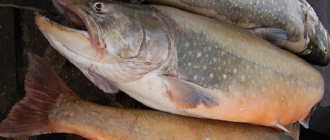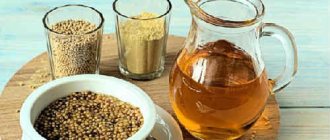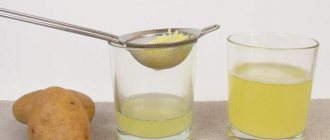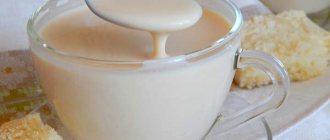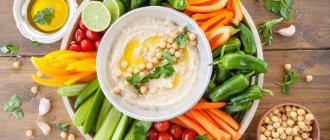Turkey liver
Patee.
Recipes - more than 45,000 detailed recipes with photos and videos for iPhone, iPad and Android. + Hundreds of new recipes every day.
Turkey liver is a popular culinary food product, which is one of the edible internal organs of a turkey. It has a pleasant slightly bitter taste. It is eaten boiled, fried and stewed, and is used to make various meat delicacies.
Calorie content
100 grams of turkey liver contains about 220 kcal.
Compound
The chemical composition of turkey liver is characterized by a high content of fats, proteins, carbohydrates, saturated fatty acids, cholesterol, vitamins (A, B2, B3, B4, B9, B12, C, K), minerals (selenium, copper, zinc, iron, phosphorus , potassium, calcium, sodium, magnesium).
How to cook
As noted earlier, turkey liver is eaten boiled, fried and stewed. In this case, the choice of cooking method depends on the desired organoleptic properties of the finished dish. In any case, it should be borne in mind that turkey liver retains its original characteristic taste and delicate texture mainly in boiled and stewed form. This is partly what explains the popularity of such a meat delicacy as turkey liver pate. In addition, various salads and snacks, as well as a variety of stuffed dishes, are prepared from it.
When preparing turkey liver, there are several things to consider. One of them is the need to add salt at the final stage of cooking, literally a few minutes before it is completely ready. This will help maintain the tender texture of the turkey liver. Also, for these purposes, prolonged heat treatment should be avoided. In most cases, 30-40 minutes is enough to cook turkey liver. In addition, this will preserve most of the original nutritional value of the product.
Another nuance of cooking turkey liver is that, like prolonged heat treatment, exposure to too high a temperature leads to the finished dish becoming tough and, in addition, quite tasteless. This is why most recipes for fried turkey liver dishes involve pre-soaking them in water, milk or cream.
What goes with it?
Turkey liver goes well with most vegetables, cereals and pasta, mushrooms, dairy products, and nuts.
How to serve
In most cases, turkey liver dishes are served separately or along with side dishes. In the first case, it is recommended to use salads, leafy greens, hot sauces, and baked goods as a supplement. As a rule, boiled, stewed and fried dishes from vegetables, mushrooms, cereals and pasta are used as side dishes.
How to choose
When choosing turkey liver, you should pay attention to the appearance of this offal. The highest quality is distinguished by those that have a dense consistency, a smooth surface, uniformly colored in dark shades of red-brown color with no gall bladder with ducts and external blood vessels.
Storage
Fresh turkey liver can be stored for an extremely short time - up to 12 hours at room temperature and up to 2-3 days in the refrigerator (4 to 8 degrees Celsius). That is why this offal is most often found on sale frozen. At temperatures no higher than minus 16 degrees Celsius, turkey liver can be stored for up to 3 months.
Application
You can make a lot of dishes from the liver - you can fry it, boil it, stew it, make a pate out of it, or make a filling for pies. The liver is very easy to prepare. A fairly popular recipe is fried turkey liver with onions in sour cream: Cut the pre-washed liver into small pieces and add salt (maximum one teaspoon). Place in a heated frying pan with fat or oil, and wait until there is not a drop of water left in the liver. Then add the onion, cut into half rings or cubes, and chopped garlic. Mix everything and cook over medium heat. After some time, pour in sour cream sauce, which consists of sour cream and boiling water, the proportions can be taken at your discretion, but generally they are taken in a 1: 1 ratio. Let everything simmer for about 5-6 minutes, and add salt and spices to taste. All you have to do is let it simmer for a couple more minutes and let it brew. That's it, the portion of vitamins is ready!
Market Analytics
- COVID-19 is changing the rules of the game in the cosmetics market
- Beauty of the future: cosmetic innovations 2020
- New ingredients are the driving force of the cosmetics industry
Convenient search for beauty salons on our website
Beauty salons in Moscow Beauty salons in St. Petersburg Beauty salons in Ekaterinburg Beauty salons in Novosibirsk
Latest blog posts on our website
- Naturecream / Geranium (Pelargonium) oil for skin health and beauty
- Prostye-sovety / Save on a beauty salon: procedures that can be done at home
- Naturecream / Growth Factor - brings back youth?
- Oksana-Lezina / 3 effective abdominal exercises from a fitness instructor for beginners
- Prostye-sovety / Making perfect curls at home
- Prostye-sovety / Which hair removal method to choose
- Naturecream / Wrinkles Puppets
- Naturecream / PEPHA-TIGHT - instant skin lifting
- Naturecream / Blue light - a danger to the skin
- Naturecream / Cocoa Butter – A treat for the skin
Latest forum topics on our website
- Mrs._Smith / Badly sunburned! What to do?((
- Ice / Is it necessary to combine fitness classes with a diet?
- Antonova / What can be used for hair loss?
- Radio operatorKat / Who was on a protein diet?
- Suzanna / Mesotherapy on the face
Other articles in this section
| Chicken roll Chicken meat is quite popular all over the globe. This meat is present in most dishes. Chicken roll is also made from it, which differs from rolls that are prepared from other types of meat in that it contains a minimum of calories. Chicken roll does not harm the human body, moreover, it promotes natural weight loss. Chicken rolls are recognized by all nutritionists in the world as a healthy and necessary product for humans. Chicken roll owes its name and popularity to the French. |
| Chicken feet Very often in stores and on the market you can find such a product as chicken feet for sale. Not very presentable in appearance, they are rarely used by housewives in cooking. Due to their fairly low cost, they are most often used in pet food preparation. But few people know that the legs of this bird are extremely useful, as is the rest of the meat of this bird. |
| Quail A very small bird, whose weight does not even reach half a kilogram, is the quail. Its meat contains a very large amount of vitamins and mineral compounds useful to our body, even despite the fact that this meat is dietary. The quail in its appearance resembles a short-legged small chicken, and it is also a fairly terrestrial bird, which resorts to flight only in the most rare cases. The common quail lives mainly in fields and is found on the territory of the Eurasian continent, as well as in Africa. Previously, these small birds were one of the favorite trophies of hunters, but nowadays quails can already be found on the shelves of almost all stores. They began to be grown on poultry farms and simply in households, both to obtain tasty and healthy dietary meat, and to produce eggs, which also contain many different vitamins and microelements. |
| Stewed lamb Almost the first animals domesticated by humans were sheep. Already in ancient Rome, lamb was eaten. This meat is the main meat among the mountaineers and nomadic tribes of Asia. |
| Turkey (legs) Turkey is a large poultry from the order Gallinae, native to America. More than a thousand years ago, it was first domesticated by the Aztecs, and in the 16th century it was brought to Europe, where they learned to keep it. And since then, the meat of this bird is the second most popular after chicken. The most common dish in culinary recipes is turkey legs. Thanks to their convenient shape, they are easy to prepare both for everyday meals and for various holidays and buffets. |
| Raw pork cutlets Pork is not only the most delicious and tender type of meat consumed, but also the most controversial. Not a single product causes so much controversy about its benefits or harm. It is generally accepted that pork dishes are too fatty, and therefore difficult to digest and negatively affect the liver. Adherents of this opinion will be greatly disappointed to learn that the digestion of pork occurs in the same way as that of lamb. But the cholesterol content is much lower. Moreover, in this indicator, pork can compete not only with other types of meat, but also with butter. Pork cutlets are perhaps the most frequent guest on our table. In the cuisines of various countries there are many recipes for dishes in which meat is cooked without any heat treatment. The taste of raw pork is much superior to lamb and beef, and the benefits from it are undoubtedly higher, provided, of course, that the meat is fresh and the pig was raised according to all the rules. |
| Fried partridge Meat of partridge is a rare delicacy on our table, and in many Western countries it has already been completely banned. The weight of the carcass is 400-500 grams, partridge meat is pink, soft, and not difficult to prepare. This is a truly Russian dish. In Tsarist Russia, not a single banquet was complete without fried partridge, but this delicacy was available only to the upper class. This dish gained wider popularity at the end of the 18th century. Today, all the chefs in the world prepare fried or stewed partridge, but this dish can be prepared at home if you have all the necessary ingredients. The meat of white, gray and mountain partridges is recommended to be fried and stewed. |
| Pork neck Pork neck is the most delicious and healthy part of the pig carcass. The neck meat is tender and not fussy to cook. The main characteristic when choosing meat is its freshness. A fresh neck has a pink color, a pleasant smell, when pressed it springs back and has a soft consistency. The neck has layers of fat, they should be white. You should not buy meat with dark lard - this indicates that the meat has been in the store for a long time. A sticky surface and a weathered crust also indicate that it is overdue. |
| Beef udder Beef udder is the mammary gland of a cow. Udder is not a product that can be called everyday, but its taste and beneficial properties are in no way inferior to other meat products. The udder arrives on supermarket shelves already in a processed state - without the taste of milk and excess fat. This is the form in which it can be prepared. Everyone remembers the taste of udder differently, mostly comparing it to chicken fillet. |
| Beef brisket Since mammoths became extinct and man learned to domesticate animals, people began to breed cattle for their own needs. According to legend, the cow was the first to come to human habitation and stayed forever. Cow's milk is the first product that can replace mother's milk. And beef has always been and remains a priority over other types of meat. Today, throughout the world, millions of different breeds have been bred and raised for food. Methods for raising and fattening calves differ from each other. Some breeds are suitable for slaughter as early as 10 months, others raise calves up to a year, and sometimes up to two years. Regardless of this, beef does not lose its value and taste. |
Benefits and harms
The chemical composition of the liver contains several vital components:
- Vitamins A, E, C, PP;
- Retinol;
- B vitamins;
- Nicotinic acid (PP)
Micro and macroelements are present: Fe, Ca, Mn, P, Na, Se, K, Cl.
Thanks to its rich vitamin and mineral composition, this product is of great value to the human body.
- Increases hemoglobin and prevents the development of anemia.
- Normalizes the functioning of the gastrointestinal tract and central nervous system, strengthens the walls of blood vessels, relieves insomnia, and quickly restores bone tissue after fractures and cracks.
- Promotes high-quality and rapid absorption of iodine, which is extremely important for people with thyroid problems.
- Prevents skin aging, regenerates cells and activates the reproductive system in women.
- Protects against viral infections, colds, improves immunity.
- Helps ensure proper functioning of the cardiovascular system.
- Improves the condition of hair, nails, skin.
Greater benefits for the liver were noted for a separate group of people. Let's look at it in the table.
- supports normal growth and development of all organs;
- strengthens bones, joints and muscles;
- quickly saturates the body with nutrients.
- promotes the full development of the fetus, prevents iron deficiency anemia;
- increases tone, prevents the appearance of anemia;
- normalizes digestion.
- does not contain cholesterol;
- normalizes blood sugar levels;
- prevents skin aging and promotes regeneration;
- easily absorbed by the body.
Contraindications
The liver will be harmful only if you do not take into account the characteristics of the body:
- high hemoglobin;
- renal failure;
- individual intolerance (side effects - cough, rash, nausea, vomiting and Quincke's edema);
- atherosclerosis.
Before use, it is better to consult a specialist.
Possible harm and contraindications
No one disputes the benefits of liver in nutrition, but parents should also be aware of the possible negative effects of the product.
- A significant protein content in offal can create additional stress on the kidneys. Therefore, kidney disease in children is a contraindication for consuming liver dishes.
- Like other foods, liver can cause allergic reactions in children. Symptoms of allergies can include difficulty breathing and paroxysmal cough, skin rashes like urticaria, swelling of the lips and eyelids, nasal congestion, and lacrimation. If a child has a food allergy, this product can be introduced into his diet only after consulting a pediatrician or allergist. Sometimes the introduction of liver into the diet is delayed for 2-3 years.
- Choosing a low-quality product or violating the rules of preparation and storage of food, bacterial contamination can lead to food poisoning, digestive disorders in the form of nausea, vomiting, and diarrhea.
- Some children have an individual intolerance to the offal; they do not like the liver taste. In these cases, you can offer your child different food options, maybe he will like some of them.
How to use when losing weight
Liver is suitable for dietary nutrition
Turkey liver can be included in your diet when losing weight, because the amount of cholesterol in it is much lower than in other types.
The offal is nourishing, healthy, and easily digestible, so it is consumed by athletes to restore strength and energy after training, as well as by sick people who follow a diet regimen.
The liver is not stored as fat and activates metabolism. With moderate and proper consumption, it will have the most positive effect on the body of a person who is on a diet for any illness or wants to lose excess weight.
How to select and store
High-quality liver differs according to the following description:
- uniform color - soft brown, pink or burgundy,
- the structure is smooth, slightly porous, but not loose, the edges are sharp, dense;
- specific sweetish smell;
- the film is intact and fits tightly;
- does not contain many vessels;
- no ice crust - choose a chilled product, because frozen liver is soft after defrosting and loses its beneficial properties and taste.
It is forbidden to eat a product with an orange or green tint, or if it is covered with white or black spots, or contains blood clots on the surface (this is a sign that it belonged to a sick bird).
Turkey liver can be stored refrigerated for no more than two days at a temperature of 0 to 4°C. It is better to keep it in a plastic bag or plastic container.
Nutrients and calories
The chemical composition of turkey liver is extremely rich - it contains a large amount of vitamins and minerals necessary for human health, and moderation in the amount of protein and fat helps to maintain good physical shape.
Let us consider in detail its chemical and vitamin composition. One hundred grams of liver contains:
- Zhirov – 22 g.
- Belkov – 19.5 g.
- Ash – 0.9 g.
- No carbohydrates.
- Water – 57.7 g.
And the total calorie content is 276 kilocalories. But this number is not constant.
Video: beneficial properties of turkey liver
Calorie content may vary depending on the method of preparation - for example, in 100 g of liver cutlets and a side dish of oatmeal there will be 241 kilocalories, in a similar portion of stewed liver with sour cream and onions - 228 kilocalories, and in cutlets with onions, potatoes and carrots cooked in slow cooker, even less - 146 kilocalories.
Availability of vitamins:
Mineral structure:
What are the benefits of turkey liver?
Its benefits are determined by its chemical composition, generous in vitamins and microelements.
For example, the selenium contained in it promotes the absorption of iodine, and this is extremely necessary for people with thyroid ailments. Vitamin E plays the role of an antitumor and immunomodulatory antioxidant.
For people for whom any type of meat is contraindicated, the liver miraculously allows them to be satiated, replacing meat both in terms of calories and nutritional value, and due to its similar taste.
Let's look at the overall utility:
- Thanks to vitamin B12, which is found in large quantities in the product, hematopoiesis is activated, thereby eliminating the prerequisites for the occurrence of anemia.
- Vitamin E, which is an excellent natural antioxidant, slows down the aging of the body, regenerates cells and promotes the functioning of the female reproductive system.
- The offal contains nicotinic acid, which is used in the treatment of many ailments.
- Vitamin C, of which there is also a lot, improves the functioning of the immune system.
- Vitamin A helps improve the condition of the skin, as well as nails and hair, and improves vision.
- Selenium found in the liver has a beneficial effect on the thyroid gland, helping in the body's absorption of iodine.
- The liver improves the functioning of the gastrointestinal tract.
- Strengthens the walls of blood vessels.
- Normalizes the nervous system, in particular, relieves anxiety and improves sleep.
- Promotes rapid restoration of bone tissue after injuries.
Benefits for children
For kids, this part of turkey in the diet is valuable and necessary because:
- Favors the normal growth and development of all organs of the child.
- Makes bone tissue and muscles stronger.
- Nourishes the child's body with the necessary valuable substances, including proteins.
- Fills you up quickly.
Benefits for pregnant women
There are no restrictions on its use for pregnant women. Vice versa:
- Iron and vitamin B9, which the product is rich in, are needed for the normal development of the child and the prevention of anemia.
- The liver prevents anemia and improves overall tone.
- Consumption of liver helps normalize the digestive process of a pregnant woman. In particular, it helps to overcome defecation disorders that often occur during pregnancy.
Benefits for the elderly
For older people, liver is beneficial because:
- It is an antioxidant that inhibits aging and stimulates the regeneration of fading functions.
- Easily digestible, gentle on the kidneys and liver.
- Does not contain cholesterol.
- Reduces blood sugar.
- Promotes rapid regeneration of bone tissue in case of injuries and fractures.
Benefits for diabetics and athletes
For those suffering from diabetes, for whom certain types of meat are contraindicated, turkey liver can compensate well for them. And quick and high-quality satisfaction of hunger allows you to reduce portions and not gain excess weight, which is extremely important for patients with this disease.
The liver will also benefit people who actively engage in sports. It replenishes energy reserves due to its high calorie content and makes it possible, if necessary, to increase the size, volume and weight of muscles.
In addition, the liver is valued by athletes for its ability to strengthen bone tissue and provide rapid rehabilitation after injuries. It also has another important quality - antidepressant properties, i.e. it can smooth out emotional experiences in case of failure.
It should be borne in mind that turkey liver, in addition to being a great benefit, can also cause harm.
It should not be used by people who:
If, despite contraindications or due to ignorance, such people still happen to try this product, you need to be prepared for possible allergic reactions in the form of:
- coughing attacks;
- rashes like hives;
- nausea and vomiting;
- Quincke's edema.
Benefits of turkey liver
Since turkey liver tissue contains almost all “meat” substances, eating it while maintaining its benefits minimizes the harmful effects of meat food on the body.
For adult men and women
Turkey liver has exceptional nutritional properties that affect the body in the following ways:
- improving the overall composition of blood, the quality and properties of plasma, rapid replenishment of blood loss, normalization of the number of leukocytes, erythrocytes, platelets.
- strengthening the body's immunity;
- normalization of the stomach and pancreas;
- strengthening the walls of blood vessels;
- normalization of the nervous system;
- improving the condition of human skin, nails, hair;
- regeneration after injury.
Vitamin E increases the body's resistance to harmful environmental influences as well. body tissues - in relation to tumors. Its benefits are also noticeable in infectious diseases.
The ability of selenium included in the product to synthesize thyroid hormones is of great benefit in stimulating the hormonal system and improving the absorption of iodine.
The zinc contained in the liver helps provide the conditions necessary for the synthesis of testosterone. More than 3.5 mg of this element contained in 100 g of product covers about 30% of a person’s daily need for it.
During pregnancy and breastfeeding
The main benefit of turkey liver when feeding mother's milk and carrying a child lies precisely in the fact that this type of meat product has very few contraindications. This means that a nursing or expectant mother has the opportunity to consume the valuable offal of this bird as food with virtually no restrictions.
Eating turkey liver during pregnancy brings great benefits to the fetus in the form of saturating the body with folic acid, iron and vitamins, which, in turn, allow the unborn child to develop normally.
For children
The vitamin and mineral nutrients that the product is rich in will help in overall development and also improve the child’s health.
Turkey liver contains such an essential amino acid as taurine, which is important for ensuring the normal development of children in infancy and early age. It promotes intensive nutrition of the brain during a period when the child’s body is growing rapidly.
Its consumption will stimulate the immune system and will benefit the development of the child’s bone tissue. The beneficial properties of the dish are complemented by a pleasant taste, which makes children more willing to eat a product that is so necessary for health.
We recommend reading: Useful properties of dorado
For the elderly
The problem of anemia is associated with iron deficiency, to which, in addition to children and pregnant women, older people are very susceptible. Consumption of liver helps meet the daily iron requirement in the body, which is 18 mg. The particular benefit of turkey liver lies in its iron content, which is twice the amount found in beef.
Zinc is an element necessary to maintain the immune system in good condition.
B vitamins are necessary in old age for the effective restoration of microdamage to muscle fibers
This excellent nutritious and easily digestible product helps normalize the body’s metabolism, which is very important for older people.
For pancreatitis and gastritis
Gastrointestinal problems such as pancreatitis and gastritis require a strict diet with a minimum content of meat products. This is where turkey liver comes to the rescue. Turkey meat can be safely consumed even in the acute phase of the disease, when foods are limited as much as possible, since it has important properties:
- easy digestibility;
- nutritional value;
- lack of coarse dietary fiber;
- minimal fat content;
- low cholesterol, which reduces the inevitable harm from eating meat products;
- hypoallergenic.
This gives grounds to give a positive answer to questions about the benefits of eating turkey liver in the menu of people with pancreatitis and gastritis.
For diabetes
The zero glycemic index of this by-product due to the complete absence of fiber makes it possible to consume it in any quantity by people with impaired blood sugar levels.
Important! The rate of conversion of fiber into sugar (glucose) is indicated by the glycemic index - the higher it is, the faster the process will take place.
For athletes and allergy sufferers
For people suffering from allergic reactions to various foods, including some types of meat products, turkey liver is a godsend, as it can provide all the valuable nutrients and protect against the consumption of other meat products with allergens that can cause harm. Allergies to such meat are rare, so the consumption of such a product, useful for its hypoallergenic properties, can be prescribed by the attending physician, depending on the appropriate individual indicators.
Among athletes, turkey liver is valued as a healthy and protein-rich source, which also has properties to help recover from various injuries.
Due to the large dose of the presence of group B in the product, namely: vitamin B 12 (cobalamin), B 2 (riboflavin) and vitamin B3 (niacin), the invaluable benefits of the product are manifested in the ability to transform proteins, fats and carbohydrates, ensuring the correct course of energy metabolism, especially for people with high physical activity.
Indeed, in one hundred grams of liver there are about 19 g of proteins with high biological significance, which are only slightly inferior to the amino acid composition (aminogram) of traditional meat. It is also noteworthy that according to the aminogram, turkey liver is richer than quark cottage cheese, which is valuable for the protein diet. Athletes take advantage of these unique properties of the liver by including it in their diet to build muscle mass.
Turkey liver in cooking
There are many recipes for making liver, including with vegetables and side dishes. It is stewed, fried and baked, cooked in the oven, electric oven, in a frying pan or in a slow cooker. It can be canned and at the same time it will retain all its nutritional qualities.
There are also dishes made from boiled liver, but when preparing them, you should keep in mind that the product is boiled in salted water for at least 40 minutes.
Of particular note is the excellent taste of liver stewed with vegetables. In addition, when stewing with vegetables, the minerals and vitamins of the ingredients mutually enrich each other. The taste of pilaf with liver is also good - it goes well with rice.
You will get a very tasty and satisfying dish if you stew the liver in sour cream. Soups with it also turn out great - for example, puree soup with the addition of carrots, asparagus, cauliflower, potatoes and bell peppers. You get good combinations if you use beans, noodles and green peas.
Since liver is much softer and more tender than meat, it is easy to prepare a variety of sauces, pates, and mousses from it. But we must not forget that frozen liver loses almost all its beneficial qualities, and in addition some of its taste.
Video: turkey liver recipe
Turkey liver recipes for children
Pate
To prepare it you need:
- wash 400 g of liver, cleared of films, with cold water;
- pour 2 liters of water into a saucepan and bring to a boil;
- add ½ tsp. salt, place the liver in the pan and cook for about 30-40 minutes;
- peel and wash 1 onion and 1 carrot;
- in another pan, cook onions and carrots (cut in half lengthwise) for 15 minutes;
- Grind the boiled and cooled liver and vegetables in a blender;
- add 40 g of softened butter;
- mix well with a blender until a homogeneous mass is formed;
- Place the finished pate in a glass jar, close it with a lid, and place in the refrigerator.
The amount of butter can be larger; you can also add 30 g of cream - in this case the pate will be softer.
Pudding
You can make liver pudding for kids.
To do this you should:
- soak a bun (or a couple of pieces of white bread without crust) in milk;
- Grind in a blender (or grind through a meat grinder) 200 g of turkey liver and a bun;
- add an egg, a little herbs, and salt to the resulting minced meat;
- put the resulting mass in a baking dish greased with butter;
- bake in the oven (can be steamed).
Pancakes
Preparation:
- rinse 300 g of turkey liver with running water, dry;
- peel the onion, wash it, cut it into 4 parts;
- chop the liver and onion in a blender;
- Add 1 egg, ground crackers (to thicken the mass) or 2 tbsp flour to the resulting mass. l., salt and ground pepper;
- mix all ingredients and place in the refrigerator for 30 minutes;
- pour a little sunflower oil into a heated frying pan;
- Spoon the pancakes into the frying pan and fry over medium heat on both sides for 1-2 minutes (until browned).
Selecting a quality product
When choosing a good liver, you must proceed from the following rules:
- Buy refrigerated liver; frozen liver loses many valuable properties.
- You need to pay attention to the structure of the liver - it should be smooth and uniform, with dense and sharp edges.
- Red-brown color, attractive smell and absence of blood clots are signs of product quality.
And after the appropriate product has been selected, you must not forget that chilled liver can be stored for only a day.
As you can see, turkey liver is a healthy and nutritious product, not difficult to prepare and extremely tasty.
Sources:
https://www.patee.ru/cookingpedia/foods/offal/turkey-livers/ https://pro100ogorod.ru/indyuki/pechen-indejki.html https://agronomu.com/bok/6961-polza-i -vred-pecheni-indeyki.html
How to choose a product
It is optimal to purchase turkey liver grown at home or from trusted suppliers. Sellers both in the store and on the market must have a quality certificate and a document from a veterinarian.
To make more profit, some farmers add antibiotics and hormones to poultry feed. And since the liver in any living organism is a barrier to all incoming substances, these medications accumulate in the liver. There will be no benefit from a child consuming such an offal, but rather harm. This is what motivates their opinion among some experts who do not recommend the early introduction of liver into the diet of children.
It is better to buy chilled liver rather than frozen, the quality of which is more difficult to assess.
- Upon inspection, the surface should be smooth, free of plaque and stains, and shiny.
- Turkey liver is red-brown and dark in color. Light coloring may occur after soaking the product. The liver of an old bird is also light in color.
- Turkey liver feels denser to the touch than chicken liver, but less dense than pork and beef.
You definitely need to pay attention to the shelf life: the liver can be stored in the refrigerator for up to a day, and in the freezer at -12 0C for 2 months, at -18 0C for up to 3 months. But during freezing, especially long-term, some of the beneficial substances are lost.


